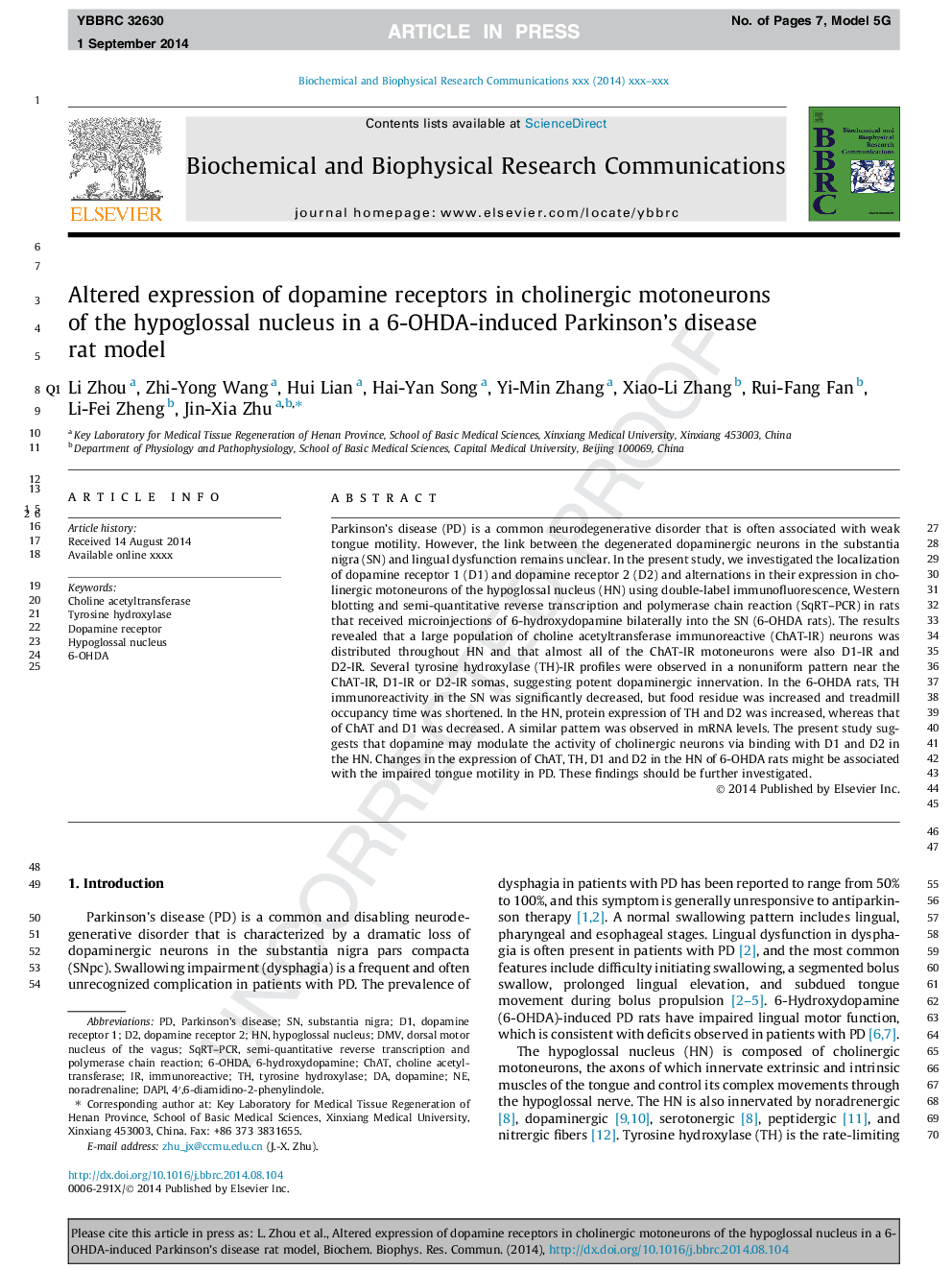| Article ID | Journal | Published Year | Pages | File Type |
|---|---|---|---|---|
| 10753803 | Biochemical and Biophysical Research Communications | 2014 | 7 Pages |
Abstract
Parkinson's disease (PD) is a common neurodegenerative disorder that is often associated with weak tongue motility. However, the link between the degenerated dopaminergic neurons in the substantia nigra (SN) and lingual dysfunction remains unclear. In the present study, we investigated the localization of dopamine receptor 1 (D1) and dopamine receptor 2 (D2) and alternations in their expression in cholinergic motoneurons of the hypoglossal nucleus (HN) using double-label immunofluorescence, Western blotting and semi-quantitative reverse transcription and polymerase chain reaction (SqRT-PCR) in rats that received microinjections of 6-hydroxydopamine bilaterally into the SN (6-OHDA rats). The results revealed that a large population of choline acetyltransferase immunoreactive (ChAT-IR) neurons was distributed throughout HN and that almost all of the ChAT-IR motoneurons were also D1-IR and D2-IR. Several tyrosine hydroxylase (TH)-IR profiles were observed in a nonuniform pattern near the ChAT-IR, D1-IR or D2-IR somas, suggesting potent dopaminergic innervation. In the 6-OHDA rats, TH immunoreactivity in the SN was significantly decreased, but food residue was increased and treadmill occupancy time was shortened. In the HN, protein expression of TH and D2 was increased, whereas that of ChAT and D1 was decreased. A similar pattern was observed in mRNA levels. The present study suggests that dopamine may modulate the activity of cholinergic neurons via binding with D1 and D2 in the HN. Changes in the expression of ChAT, TH, D1 and D2 in the HN of 6-OHDA rats might be associated with the impaired tongue motility in PD. These findings should be further investigated.
Keywords
Related Topics
Life Sciences
Biochemistry, Genetics and Molecular Biology
Biochemistry
Authors
Li Zhou, Zhi-Yong Wang, Hui Lian, Hai-Yan Song, Yi-Min Zhang, Xiao-Li Zhang, Rui-Fang Fan, Li-Fei Zheng, Jin-Xia Zhu,
